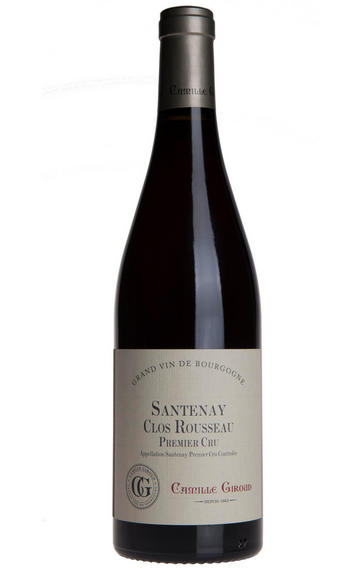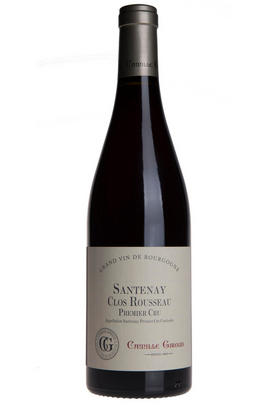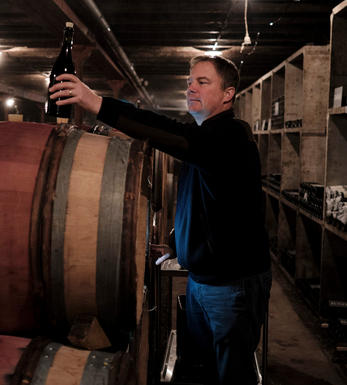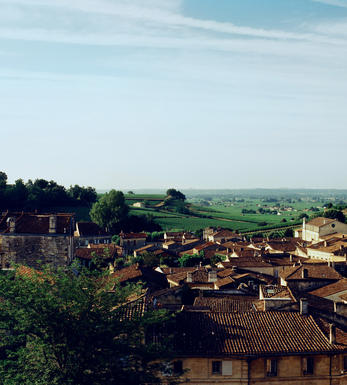
2019 Santenay, Clos Rousseau, 1er Cru, Camille Giroud, Burgundy

Critics reviews
Jasper Morris MW, Inside Burgundy (October 2020)
Drink: 2026+
Alan Meadows, Burghound (June 2019)
Drink 2023-2030
Neal Martin, vinous.com (January 2021)
Drink 2021-2029
Jancis Robinson, jancisrobinson.com (January 2021)
About this WINE

Maison Camille Giroud
Established in 1865, Maison Camille Giroud has a rich heritage rooted in Burgundy’s winemaking tradition. Initially a specialist négociant, they sourced wines from esteemed growers across the renowned Côte d’Or region, ageing them meticulously in their cellars for decades to achieve peak maturity.
In 2001, a consortium, including Napa Valley winery owner Ann Colgin and wine investors, took over, aiming to blend tradition with modern techniques and a terroir-driven approach. This led to innovations, like wooden presses and open vats, under the dynamic winemaker David Croix.
Most wines continued to be crafted from carefully selected grapes, many from old vines. Their commitment to natural winemaking practices, including native yeast fermentation and minimal intervention, set them apart.
In 2016, Carel Voorhuis continued the legacy of crafting pure, terroir-driven wines, maintaining Maison Camille Giroud’s reputation for excellence in Burgundy.

Santenay
Santenay, situated in the southern part of the Côte de Beaune in Burgundy, France, is known for producing some of the world’s most prestigious and sought-after wines. The terroir of Santenay is diverse, featuring limestone and clay soils, which play a crucial role in shaping the unique character and flavours of the wines.
The region’s winemaking heritage dates back centuries, with a deep-rooted tradition of crafting exceptional Pinot Noir and Chardonnay wines. The village’s vineyards benefit from a favourable microclimate that promotes grape ripening while retaining freshness and balance in the wines.
The red wines often exhibit a harmonious blend of red fruit flavours, such as cherry and raspberry, and subtle earthy and spice undertones. The tannins in these wines are typically refined and well-integrated, contributing to their elegance and age-worthiness.
On the other hand, Santenay’s white wines are characterised by their bright acidity, offering refreshing citrus and orchard fruit notes with a hint of minerality.
Winemakers in Santenay take pride in following a traditional and artisanal approach to winemaking, emphasising the importance of respecting the land and expressing the unique terroir in each bottle. They aim to capture the essence of the vineyards and the nuances of the grape varieties, resulting in authentic wines that reflect their origin.
Santenay’s picturesque landscapes and dedication to producing high-quality wines attract wine enthusiasts and connoisseurs worldwide. It is a region where history, tradition, and innovation intersect, making it a compelling destination for anyone seeking to explore Burgundy’s exceptional wines and winemaking culture.

Pinot Noir
Pinot Noir is probably the most frustrating, and at times infuriating, wine grape in the world. However when it is successful, it can produce some of the most sublime wines known to man. This thin-skinned grape which grows in small, tight bunches performs well on well-drained, deepish limestone based subsoils as are found on Burgundy's Côte d'Or.
Pinot Noir is more susceptible than other varieties to over cropping - concentration and varietal character disappear rapidly if yields are excessive and yields as little as 25hl/ha are the norm for some climats of the Côte d`Or.
Because of the thinness of the skins, Pinot Noir wines are lighter in colour, body and tannins. However the best wines have grip, complexity and an intensity of fruit seldom found in wine from other grapes. Young Pinot Noir can smell almost sweet, redolent with freshly crushed raspberries, cherries and redcurrants. When mature, the best wines develop a sensuous, silky mouth feel with the fruit flavours deepening and gamey "sous-bois" nuances emerging.
The best examples are still found in Burgundy, although Pinot Noir`s key role in Champagne should not be forgotten. It is grown throughout the world with notable success in the Carneros and Russian River Valley districts of California, and the Martinborough and Central Otago regions of New Zealand.


Buying options
Add to wishlist
Description
Clos Rousseau is a big vineyard mostly composed of iron-rich clay but the sub-clos of Roches Noires has more limestone. Carel has access to three parcels, one with 50-year-old vines. There’s less whole-bunch this year, at 25%. The bouquet is pretty and perfumed; the fruit bounces through to the palate, sitting atop the typical Santenay chunkiness. Drink 2024-2035.
wine at a glance
Delivery and quality guarantee